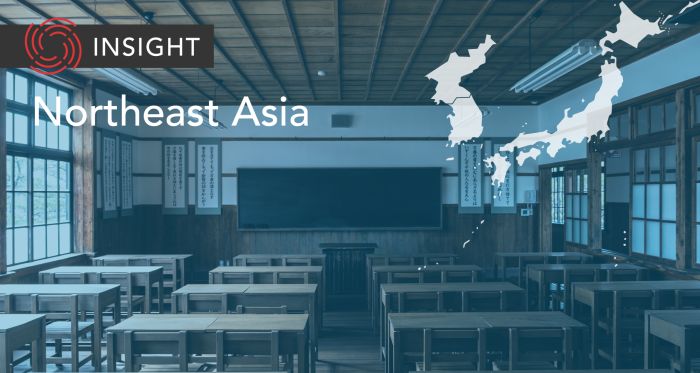The Takeaway
To counter Japan's alarming population decline, governments at both the prefectural and national level are employing novel strategies, including phasing out tuition fees for high school and higher education institutions. The aim is to reduce financial barriers to family planning and boost birthrates. However, even as these educational reforms take centre stage, the question remains: to what extent will waiving tuition costs help to solve Japan's demographic crisis?
In Brief
On August 25, Osaka became Japan’s first prefecture to officially phase out high school tuition fees for prefectural residents by the 2026 school year. While the exact details of the plan will be finalized in September, Osaka Governor Yoshimura Hirofumi hopes that the policy will create a society that is “open to everyone” and expressed optimism that the initiative would expand across the country.
In May, Osaka’s prefectural committee proposed a draft three-year timeline to gradually reduce income restrictions for public and private high schools and public universities. In August, changes were announced to appease opponents of the policy. These updates included an increase in government subsidies for private schools anxious about a potential subsequent decline in education quality.
The initiative is limited to Osaka Prefecture and, as such, questions regarding cross-prefecture students are mounting. Private schools in neighbouring prefectures are reluctant to join the new system. They fear the policy could create inequality among students while potentially increasing the financial burden on the schools.
Similar initiatives to reduce the costs of education have cropped up elsewhere in Japan. In April, Japan’s Ministry of Education, Culture, Sports, Science and Technology (MEXT) announced that it would increase the income cap for higher education public aid during the 2024 fiscal year, effectively providing financial aid to an additional 200,000 students. In August, Hyogo Prefecture introduced plans to make two post-secondary schools free for prefectural residents starting in 2024.
By improving access to education and alleviating financial burdens, central and prefectural governments hope that debt-free, educated, young families will be incentivized to have more children.
Implications
In 2022, Japan saw a record-low 770,747 births, the first time that figure has fallen below 800,000. A survey conducted in March 2023 found that over 70 per cent of women willing to have children were impeded by the high costs of child-rearing. The government, in turn, brought in policies such as financial aid for childcare and education to reduce these barriers.
Despite aggressive pro-birth and education policies, government estimates predict a significant decline in post-secondary enrolment by 2050. Similar trends are affecting high schools, with some schools closing down altogether as enrolment rates decline. In Osaka, the tuition reductions may cause unforeseen problems due to a local ordinance stipulating the closure of schools that do not meet student quotas for three consecutive years. Many public schools fear that the prefecture-wide tuition reductions may result in reduced enrolment, as students may move to private schools. Neighbouring prefectures may also face school closures if Osaka residents choose to attend high schools within their prefecture.
While the impact of reducing or eliminating tuition fees on birthrates remains unclear, the importance of promoting equal access to education is evident, and countries such as Canada are similarly supporting young people by eliminating interest on federal student and apprentice loans. However, Japan’s severe population decline necessitates policies like tuition reduction. Adopting similar programs will need to be accompanied by structural changes to the country’s existing educational infrastructure, such as reducing student capacity, mergers of educational institutions, and better frameworks to support international students.
What's Next
- Increased use of AI, digital tools to offset labour shortage
From elementary to high school, reduced enrolment and teacher burnout are compromising both the quality of students’ education and educators’ workplace satisfaction. Japan will continue to expand the use of digital tools such as online classrooms and AI chatbots to improve the efficiency of the educational system as labour shortages persist.
- Reorganization of higher education institutions
Japan will need to restructure its secondary and post-secondary educational systems as it adapts to demographic changes. To reduce excess capacity, Japan will likely impose strict regulations on new or expanding schools and merge like-minded institutions while increasing funding for the education of up-and-coming industries such as information technology and science.
- Internationalization of post-secondary education
Emphasis on inbound and outbound international education will continue to increase in the years to come as the government seeks to foster and retain specialized human resources. These policies will include increases to financial aid for Japanese students abroad and eased residency requirements for international students settling in Japan.
- Increasing global competitiveness of Japanese institutions
Over the last two decades, Japan’s international standing in academic research and university rankings has significantly declined. To counteract this trend, in 2022, Japan created a C$92.7-billion education fund to subsidize universities’ growth and development. Further efforts to increase Japan’s global academic competitiveness, such as creating overseas university campuses, are expected.
• Produced by CAST's Northeast Asia team: Dr. Scott Harrison (Senior Program Manager); Momo Sakudo (Analyst); Tae Yeon Eom (Analyst); and Sue Jeong (Analyst).




